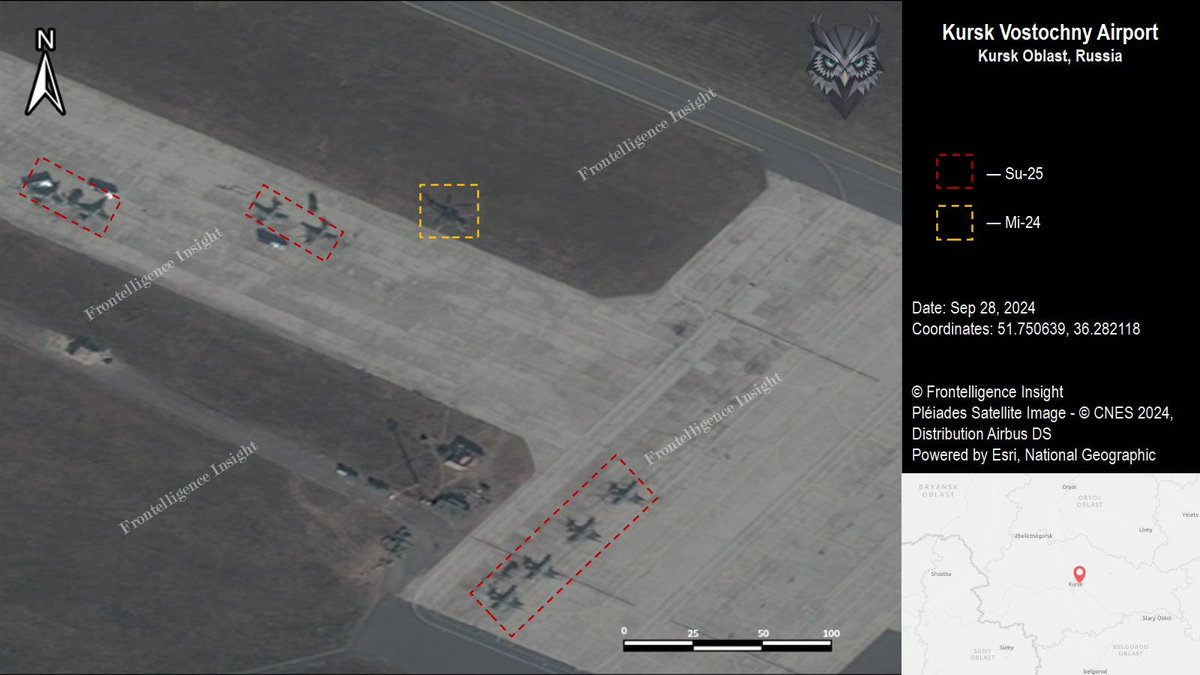Early reports suggest that Ukraine's use of ATACMS missiles may come with specific geographic limitations.
This nuance might significantly influence the outcomes of their use. Here’s a breakdown of what we can expect, given that the information about limitations is correct🧵:
This nuance might significantly influence the outcomes of their use. Here’s a breakdown of what we can expect, given that the information about limitations is correct🧵:

2/ As reported before by our team Frontelligence Insight, Russian forces have moved many key air assets beyond ATACMS range, leaving mainly helicopters and close-support jets at the Kursk airfield within striking distance, reducing high-value targets
https://x.com/Tatarigami_UA/status/1855333854858375661
3/ Russia has a vast network of makeshift ammo depots, command posts, rail stations, and other tactical sites in Kursk oblast. However, their sheer number far outstrips the limited missiles available to Ukraine.
4/ Ukraine faces difficulties with limited salvo sizes and significant ATACMS interception rates, reducing the odds of consistently successful strikes. Our team has detailed these dynamics in a dedicated report before, and they should be factored into expectations.
5/ ATACMS variants differ in range and warhead type: some with unitary warheads, others with submunitions. Not all can reach 300 kilometers or target fortified structures, limiting the options further
6/ Quite serious doubts remain over whether Ukraine will be allowed to target Russian oil refineries or energy infrastructure, as the U.S. has opposed similar operations before. While this remains speculative, there is a good chance that critical infrastructure might be excluded
7/ ATACMS will aid Ukraine on the battlefield without a doubt, but expectations should be tempered. Their use is unlikely to dramatically impact Russian or North Korean-linked forces in Kursk, delivering incremental tactical gains rather than immediate and decisive outcomes.
8/ The goal is not to discourage public sentiment but to set realistic expectations, to avoid future speculation about why ATACMS didn’t shift the war’s tide or destroy the Russo-Korean forces in Kursk Oblast.
• • •
Missing some Tweet in this thread? You can try to
force a refresh


















